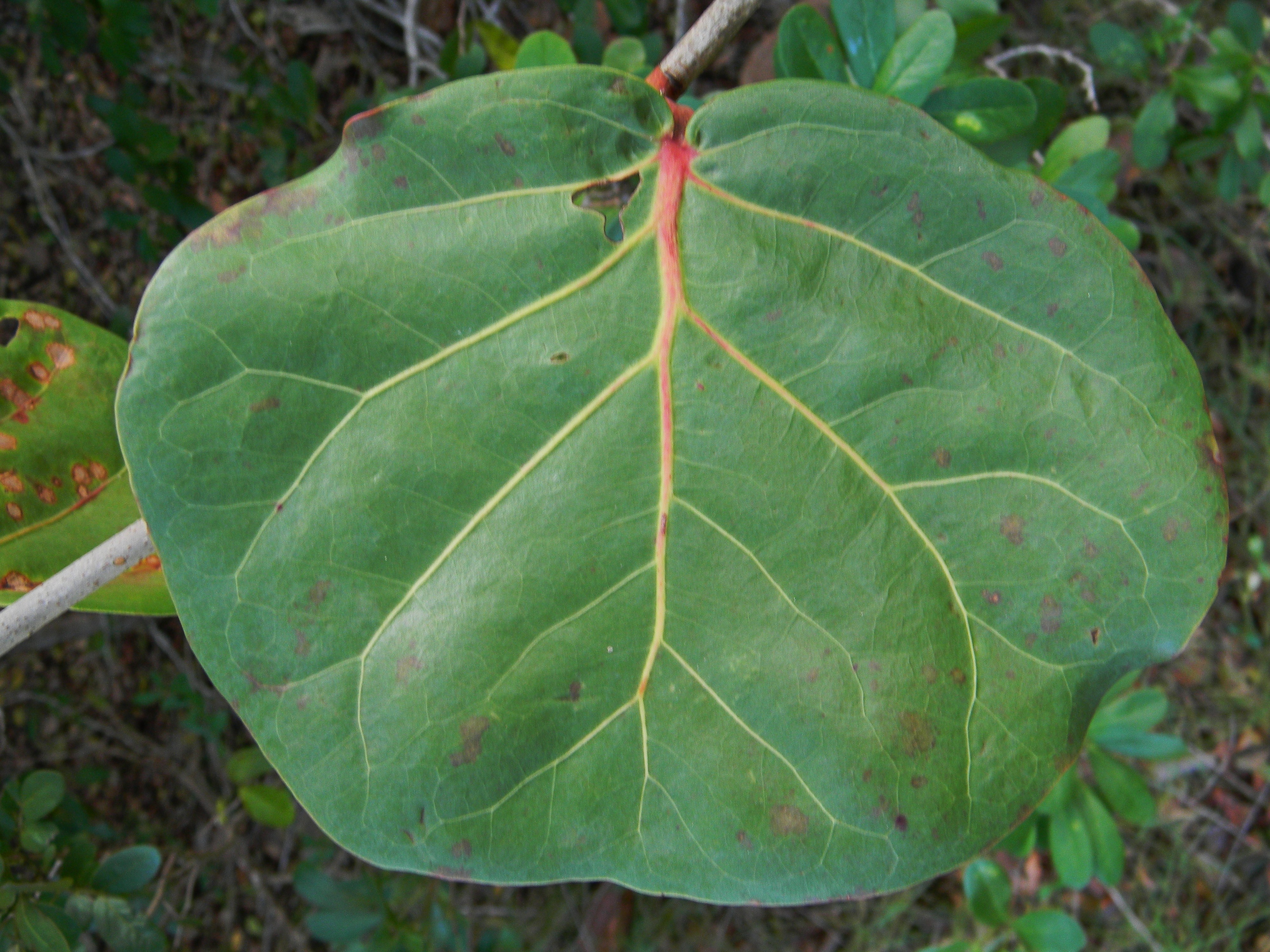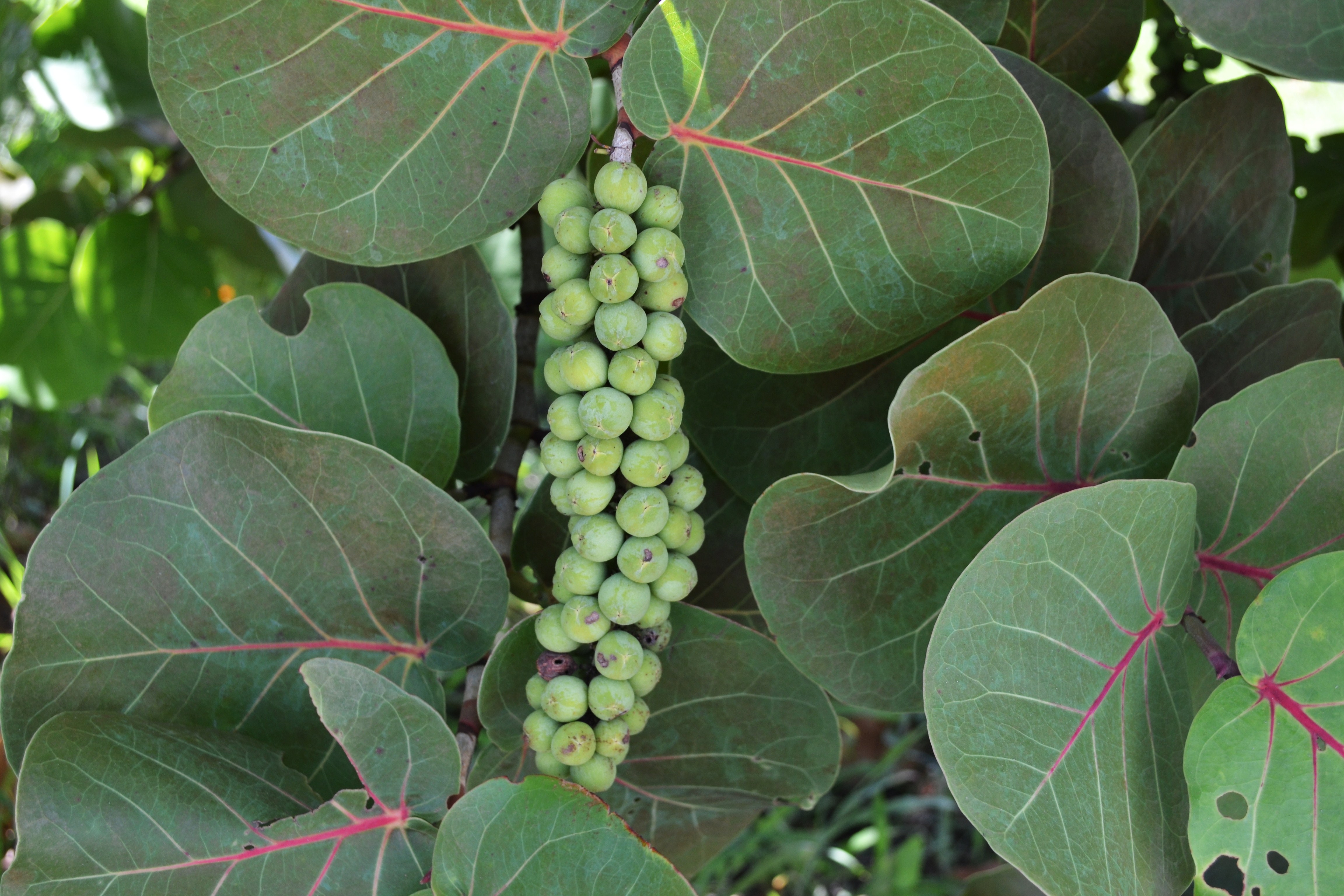Sea Grape
Coccoloba uvifera
Plant Family: Polygonaceae
Leaves: Alternate, simple, round, to 25 cm, the central vein is red at the base; new leaves have an attractive bronze color, which soon turns green and finally red with age; the leaf petioles clasp the stem.
Bark: Light gray, smooth.
Flowers: Dioecious, green to white, in long pendulous racemes that are seen throughout the year, peaking in spring and summer.
Fruits: Green, ripening to red-purple, to 2.5 cm in diameter, in long clusters on the female tree, edible. They may be eaten raw, used to make jellies and jams, or fermented to make wine.
Habitat: Coastal hammocks, beaches; also widely planted; Sea Grape is drought-hardy and salt-tolerant.
Growth Form: Small to medium-sized tree.
Similar Species: Sea Grape is related to Pigeon Plum (Coccoloba diversifolia), however, the large, rounded leaves of Sea Grape are unmistakable. Both Coccoloba species share the characteristic that the leaf petiole clasps the stem.
Comments: Sea Grape is a Florida and West Indies native that has been introduced as a coastal tree to Mexico, Central and South America, Hawaii, and several countries in the tropical Pacific for its attractive foliage and useful fruits.


